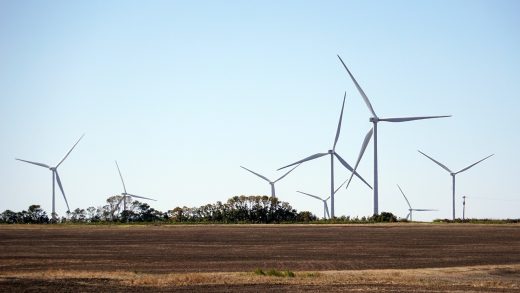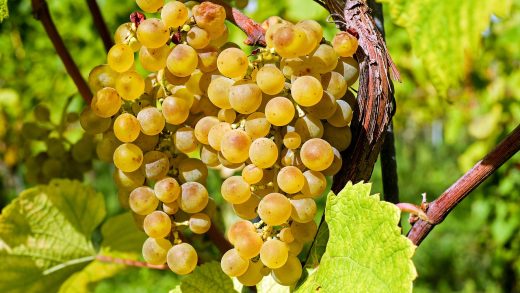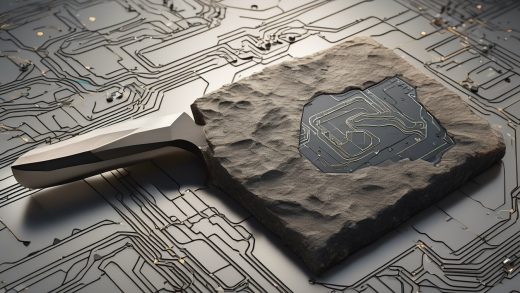The art world is experiencing a fascinating upheaval as AI-generated art enters the scene, challenging the very essence of creativity. Have you ever wondered what happens when machines begin to create art? This competition between humans and machines is not just about who can produce the most visually appealing piece; it’s about redefining the boundaries of artistic expression and what it means to be an artist in the modern age. With algorithms and neural networks capable of generating stunning visuals, the dynamics of artistic creation are shifting dramatically.
As we dive into this intriguing landscape, we must consider the implications for artists, collectors, and the art market. Traditional artists are now faced with a new kind of competition that blurs the lines between human creativity and artificial intelligence. Imagine a world where your next favorite painting could be the result of a machine’s calculations rather than a human’s brush strokes. It raises critical questions: Is AI art genuine? Can it evoke the same emotional responses? And, most importantly, how will this influence the future of artistic expression?
In this article, we will explore how AI technologies have gained prominence in the art world, transforming traditional methods and enabling new forms of creativity that challenge conventional artistic boundaries. We will also delve into the unique qualities that define human artistic expression, emphasizing the emotional depth, storytelling, and cultural context that are often absent in AI-generated works.
As we navigate through this fascinating debate, we will examine the authenticity and value of AI art compared to human-created artworks. The art market is evolving, and understanding current trends will help us grasp how AI is reshaping market dynamics. Furthermore, ethical considerations regarding authorship and ownership will be addressed, shedding light on the implications for artists and the broader creative community.
Join us as we embark on this journey to uncover the layers of the AI art competition, where humans and machines collide in a spectacular display of creativity and innovation. The future of art is here, and it’s more exciting—and complex—than ever before!
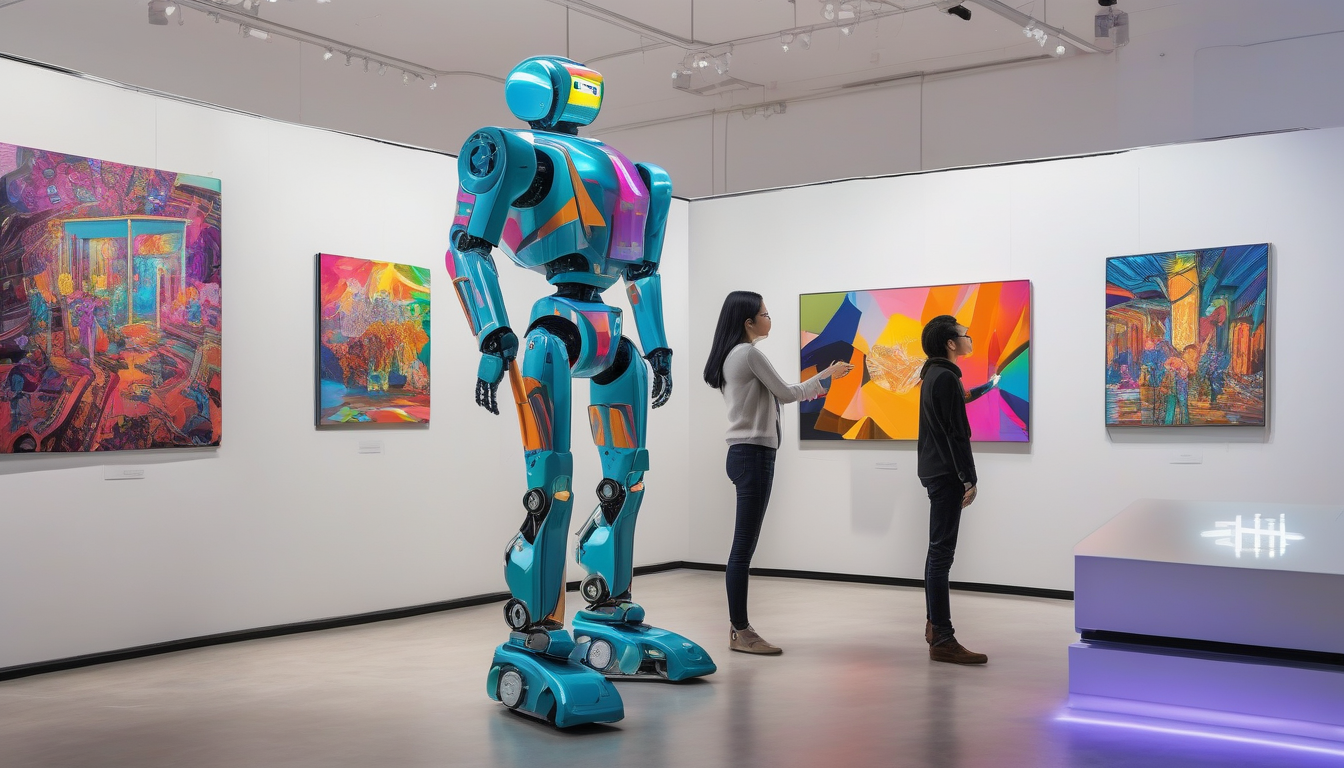
The Rise of AI in Art
In recent years, AI technologies have emerged as a groundbreaking force in the art world, shaking up traditional practices and opening doors to innovative forms of creativity. Imagine a canvas where algorithms play the role of the artist, generating stunning visuals that can leave even the most seasoned human creators in awe. This shift is not just a trend; it’s a revolution that challenges our understanding of what art can be.
As AI becomes more sophisticated, it’s fascinating to see how artists and technologists are collaborating to push the boundaries of creativity. Tools powered by machine learning can analyze vast amounts of data, learning from countless styles and techniques. This allows them to produce art that is not only visually striking but also conceptually rich. For instance, AI can create unique pieces by drawing inspiration from famous artists, blending styles in ways that humans might not even consider.
One of the most exciting aspects of AI in art is its ability to generate unexpected outcomes. Unlike human artists, who may have preconceived notions or emotional biases, AI operates on logic and data. This can lead to surprising and innovative results that challenge conventional artistic norms. For example, an AI might create a piece that combines elements of surrealism with abstract expressionism, resulting in a work that is entirely new and thought-provoking.
However, the rise of AI in art also raises important questions about authenticity and creativity. Can a machine truly create art, or is it merely a reflection of the data it’s been fed? This debate is central to understanding the implications of AI in the artistic realm. Some argue that true art requires a human touch, an emotional connection that machines simply cannot replicate. Others contend that the ability to produce something beautiful, regardless of the creator, is what truly matters.
As we explore the rise of AI in art, it’s essential to recognize that this technology is not here to replace human artists. Instead, it serves as a collaborative tool, enhancing the creative process and offering new avenues for expression. Artists can now use AI to experiment with their ideas, pushing their creative limits and discovering new possibilities. In this way, AI is not just a competitor; it’s a partner in the ongoing journey of artistic exploration.
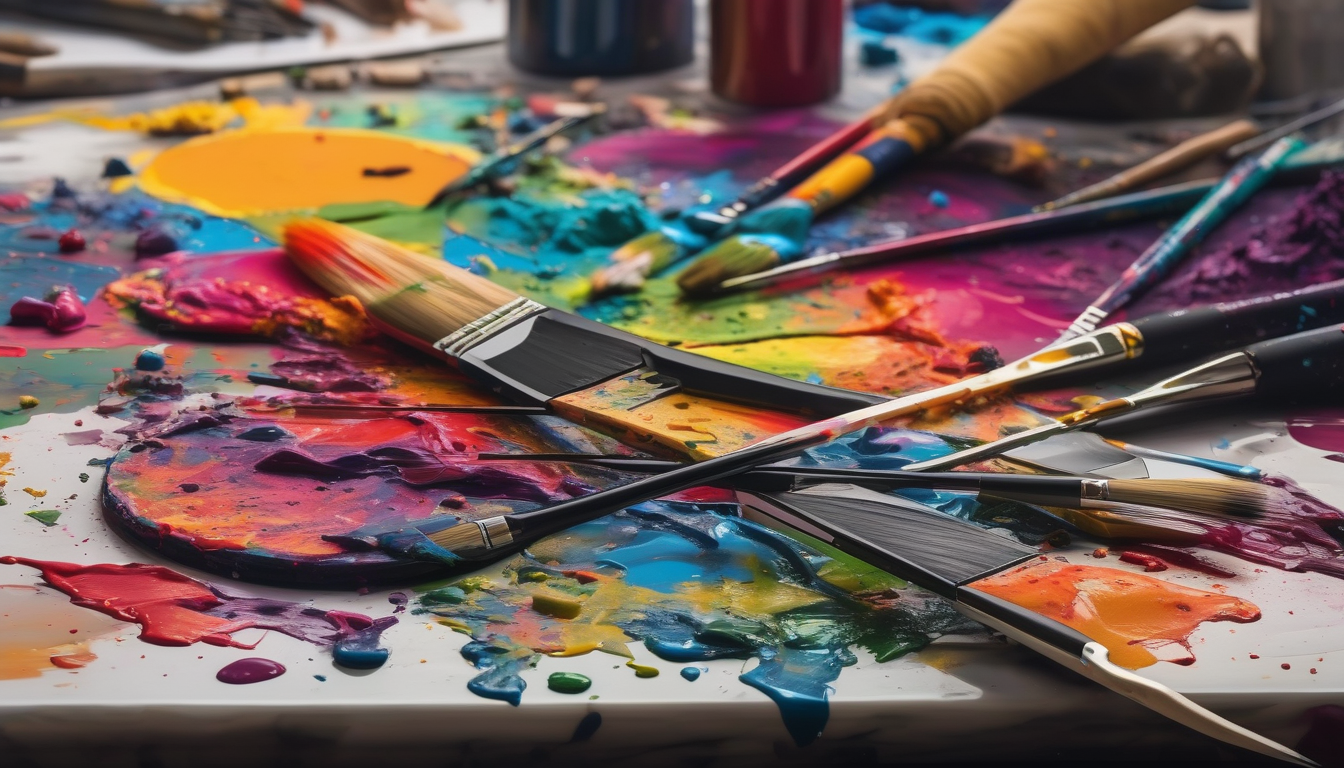
Human Creativity: An Enduring Force
In a world increasingly dominated by technology, human creativity stands as a beacon of individuality and emotional depth. While AI-generated art can produce stunning visuals and intricate designs, it often lacks the personal touch that only a human artist can provide. Think of it this way: AI might be able to compose a symphony, but it can’t feel the heartache that inspires a ballad. This emotional connection is what makes human artistry so irreplaceable.
One of the most compelling aspects of human creativity is its ability to convey emotional depth. Artists draw from their own experiences, struggles, and triumphs, infusing their work with feelings that resonate with others. For example, a painting that reflects a moment of joy can evoke happiness in the viewer, while a piece born from sorrow can touch the heart in profound ways. This emotional resonance creates a bridge between the artist and the audience, fostering a connection that transcends mere visuals.
Art has always been a powerful medium for storytelling. Every brushstroke, every note, and every word can tell a story that reflects not just the artist’s journey but also societal issues and cultural narratives. Human artists have a unique ability to weave personal and collective stories into their work, allowing viewers to engage with the art on multiple levels. For instance, a mural depicting community struggles can inspire dialogue and reflection, serving as a catalyst for change.
Moreover, the cultural backgrounds of artists play a significant role in shaping their creative expression. Artists often draw inspiration from their surroundings, heritage, and experiences, creating works that are rich in cultural significance. This cultural context is vital, as it not only informs the artist’s perspective but also enriches the art itself. A piece that reflects the vibrancy of a specific culture can educate and provoke thought among viewers who may be unfamiliar with that background.
In summary, while AI art brings new tools and perspectives to the table, the essence of human creativity lies in its emotional depth, storytelling ability, and cultural richness. These qualities ensure that human artists will continue to hold a vital place in the art world, creating works that resonate with the human experience.
Emotional Depth in Human Art
When we think about art, what often comes to mind is the power of emotion. Human artists have an incredible ability to weave their personal experiences, thoughts, and feelings into their creations, resulting in works that resonate deeply with viewers. Unlike AI, which processes data and algorithms, human artists draw from a well of emotional depth that is uniquely their own. This emotional infusion is what makes human art so compelling; it tells a story that is not only visual but also visceral.
Consider this: when you look at a painting, do you feel something? Maybe it reminds you of a cherished memory or evokes a sense of nostalgia. This connection is often rooted in the artist’s own journey, their struggles, and triumphs. For instance, artists like Van Gogh poured their pain and passion onto the canvas, creating works that speak to the human condition. The swirling skies of “Starry Night” are not just a depiction of a landscape; they are a reflection of Van Gogh’s turbulent mind and emotional state.
Moreover, the emotional connection in human art can often be categorized into several layers:
- Personal Experiences: Artists often channel their life stories into their work, making each piece a unique narrative.
- Social Commentary: Many artworks serve as mirrors to society, reflecting cultural and social issues that resonate with the audience.
- Universal Themes: Love, loss, and joy are themes that transcend time and culture, allowing viewers to connect on a deeper level.
This emotional resonance is not just a byproduct of the art; it’s the essence of what makes it significant. It invites the viewer to engage, to reflect, and to feel. While AI can generate stunning visuals, it lacks the life experiences and emotional narratives that human artists bring to the table. This is why art created by humans is often celebrated for its authenticity and depth.
In conclusion, the emotional depth found in human art is a vital component of its value and impact. It creates a bridge between the artist and the audience, fostering a connection that transcends mere aesthetics. As we navigate the evolving landscape of art, it’s crucial to appreciate the irreplaceable emotional narratives that only human artists can provide.
Storytelling Through Art
Art has always been a powerful medium for storytelling, weaving narratives that resonate deeply with viewers. Each brushstroke, color choice, and composition tells a tale, often reflecting the artist’s personal journey or societal issues. When you gaze at a painting, you’re not just seeing colors on a canvas; you’re diving into a world of emotions, experiences, and messages that the artist wants to convey.
Take, for instance, the iconic works of Vincent van Gogh. His paintings, like The Starry Night, don’t merely depict a night sky; they narrate his turbulent emotions and mental struggles. The swirling skies and vibrant colors invite viewers to feel the chaos and beauty of his internal world. This is the emotional depth that human artists bring to their work, a depth that algorithms simply cannot replicate.
Moreover, storytelling in art extends beyond personal experiences. Artists often reflect cultural narratives and societal issues through their creations. For example, consider the works of African American artists during the Harlem Renaissance. They used their art to tell stories of struggle, resilience, and cultural pride, effectively bringing attention to the African American experience in a time of great social upheaval. Through art, they shared their history, their pain, and their triumphs, creating a visual dialogue that resonates even today.
In addition, art can serve as a form of social commentary. Many contemporary artists tackle pressing issues such as climate change, inequality, and political unrest. By using their platforms to tell these stories, they engage viewers in critical conversations. For instance, consider the thought-provoking installations of artists like Ai Weiwei, who uses his art to challenge authority and highlight human rights abuses. His work encourages us to reflect on our own roles in these narratives and inspires action.
Ultimately, storytelling through art is a rich tapestry of human experience, emotions, and cultural reflections. While AI-generated art can create visually stunning pieces, it often lacks the profound narratives that human artists imbue in their work. The next time you admire a piece of art, take a moment to consider the story it tells. What emotions does it evoke? What messages lie beneath the surface? This is the magic of storytelling through art, a timeless tradition that continues to thrive in the hands of human creators.
Cultural Context and Influence
Cultural context plays a pivotal role in shaping artistic expression, infusing art with meaning that transcends mere aesthetics. When we look at a painting or a sculpture, we’re not just witnessing colors and forms; we’re engaging with a narrative deeply rooted in the artist’s background, experiences, and societal influences. For instance, consider how traditional African art often reflects community values and spiritual beliefs, while Western contemporary art might explore themes of individualism and consumerism. Each piece serves as a window into the artist’s world, revealing the intricate tapestry of their cultural heritage.
Moreover, artists often draw inspiration from their environments, using local materials, techniques, and themes that resonate with their communities. This connection to one’s roots can evoke a sense of pride and identity, making the artwork not only a personal expression but also a communal narrative. For example, street art in urban settings often addresses social issues relevant to the local population, acting as a powerful medium for change and awareness.
In today’s globalized world, the interplay of cultures has led to fascinating hybrid art forms. Artists are increasingly blending influences from different backgrounds, creating works that challenge traditional boundaries and provoke thought. This cultural fusion can be seen in the rise of multicultural art exhibitions, where diverse perspectives come together to create dialogue and understanding.
Ultimately, the cultural context surrounding an artwork enriches its value and significance. It invites viewers to not only appreciate the visual appeal but also to engage with the stories and histories encapsulated within. As we navigate through the complexities of art in a multicultural society, it’s essential to recognize and celebrate the myriad ways that culture informs creativity. This understanding not only enhances our appreciation of art but also fosters a deeper connection to the diverse narratives that shape our world.
AI’s Unique Contributions
Artificial Intelligence (AI) is not just a buzzword; it’s a revolutionary force that’s redefining the landscape of creativity. Imagine a world where machines can generate art that’s not only visually stunning but also pushes the boundaries of traditional artistic expression. AI’s unique contributions to the art world are multifaceted, offering both artists and audiences a fresh perspective.
One of the most fascinating aspects of AI-generated art is its ability to analyze vast amounts of data. By processing thousands of artworks, algorithms can identify patterns, styles, and techniques that may take a human artist years to master. This capability allows AI to create pieces that blend various influences seamlessly, often resulting in unexpected and innovative outcomes. For instance, AI can combine elements from different art movements, such as Impressionism and Surrealism, to produce something entirely new and captivating.
Moreover, AI art can challenge our perceptions of creativity. It raises the question: if a machine can create something beautiful, what does that mean for human artists? While some may argue that AI lacks the emotional depth inherent in human art, others see it as a tool that can enhance human creativity. For example, artists can use AI to generate ideas or assist in the creative process, leading to collaborations that blend human intuition with machine precision.
Another significant contribution of AI to the art world is its democratizing effect. With AI tools becoming more accessible, aspiring artists can experiment with styles and techniques that were once reserved for the elite. This accessibility means that anyone with a passion for art can create and share their work, breaking down barriers and fostering a more inclusive artistic community.
To illustrate the impact of AI on creativity, consider the following table that outlines some key contributions:
| Contribution | Description |
|---|---|
| Data Analysis | AI processes vast datasets to identify trends and styles, creating hybrid artworks. |
| Collaborative Creativity | Artists use AI as a co-creator, blending human emotion with algorithmic precision. |
| Accessibility | AI tools empower more individuals to engage in artistic creation, fostering diversity. |
In conclusion, AI’s unique contributions to the art world are not merely about creating pretty pictures. They challenge our understanding of creativity and open up new avenues for artistic exploration. As we continue to embrace this technology, the collaboration between humans and machines may lead to a renaissance of creativity that we can only begin to imagine.
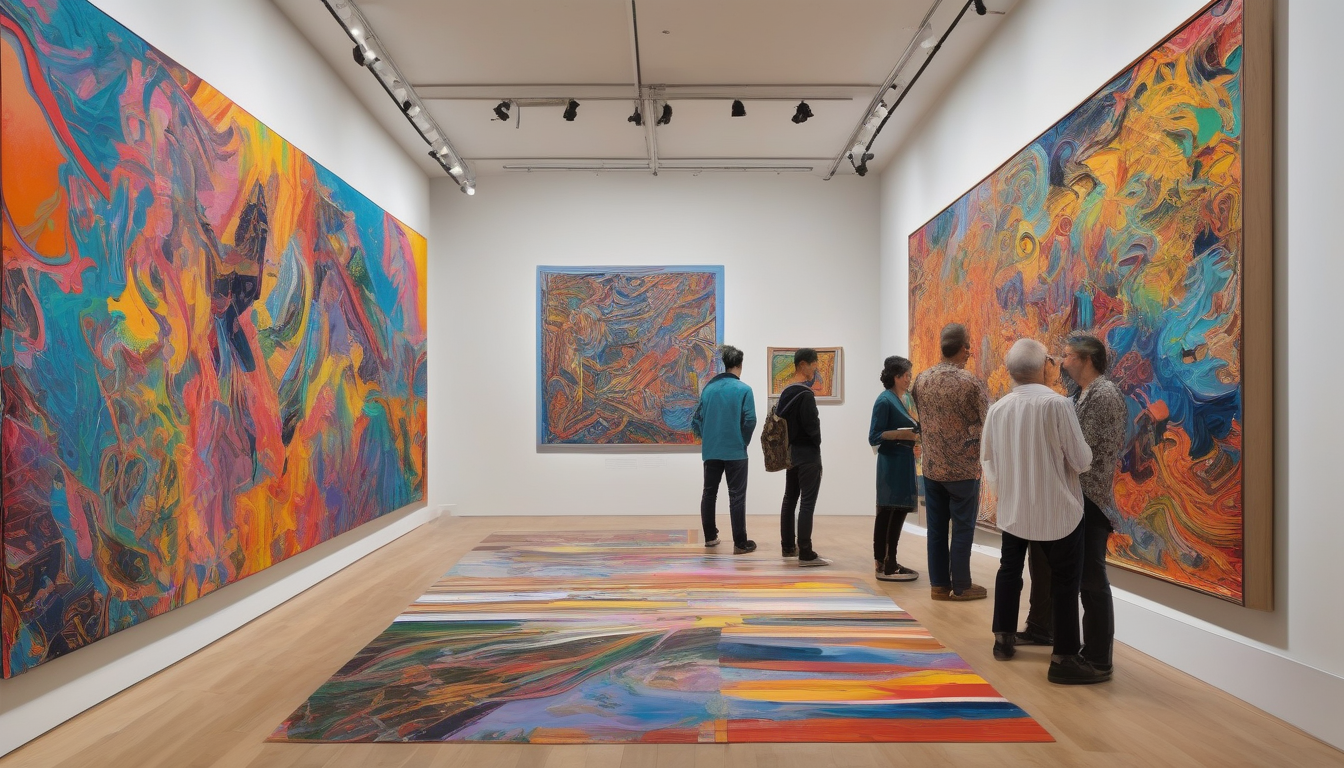
The Debate: Authenticity and Value
The rise of AI-generated art has sparked a vibrant debate about authenticity and value within the art community. As algorithms and machine learning techniques become increasingly sophisticated, they challenge our traditional notions of what constitutes art. Can a piece created by a machine hold the same weight as one crafted by a human hand? This question lingers in galleries, online platforms, and even at high-profile auctions.
One of the primary concerns is whether AI-generated art can truly be considered original. Unlike human artists who draw from their personal experiences and emotions, AI relies on vast datasets to create its works. This raises an intriguing point: if an AI is simply remixing existing styles and concepts, can its creations ever be seen as authentic? Many argue that the essence of art lies in the artist’s unique perspective, which AI lacks. Yet, others suggest that the novelty of AI art offers a fresh approach that can evoke new ideas and emotions.
To illustrate this debate, let’s consider a few key factors that contribute to the discourse on authenticity and value:
- Originality: Human artists often produce work that reflects their unique experiences, cultural backgrounds, and personal stories, while AI art is generated from existing data.
- Emotional Connection: Human-created pieces tend to resonate on a deeper emotional level, often telling stories that connect with viewers personally.
- Market Perception: The art market’s acceptance of AI-generated works is evolving, with some collectors embracing the novelty while others remain skeptical.
As we explore market trends, a fascinating shift is evident. Auction houses are beginning to feature AI art, and collectors are increasingly interested in these pieces. For instance, a recent auction saw an AI-generated artwork sell for an astonishing sum, challenging the perception of value in the art world. This development prompts us to consider: is the price tag of a piece the ultimate measure of its worth, or does the story behind it hold more significance?
Ethical considerations also come into play in this debate. Questions around authorship and ownership of AI-generated works complicate the landscape further. If an AI creates a masterpiece, who is the true artist? The programmer? The user? Or is it the machine itself? These questions are critical as we navigate the evolving relationship between technology and creativity.
In conclusion, the debate surrounding authenticity and value in AI-generated art is far from settled. As both human artists and machines continue to push the boundaries of creativity, we must remain open to new definitions of art while honoring the deep emotional connections that human creativity fosters. The future of artistic expression lies in the balance between tradition and innovation, inviting us all to ponder what art truly means.
Market Trends and Acceptance
The art market is witnessing a remarkable transformation as AI-generated art gains traction. Collectors and investors are increasingly intrigued by the possibilities that artificial intelligence brings to the creative landscape. No longer confined to traditional methods, artists and technologists are collaborating to produce works that not only challenge our perceptions but also redefine what we consider art. This evolution raises essential questions about how we value creativity in a world where machines can generate stunning visuals in mere moments.
As AI art continues to flourish, we see a shift in market dynamics. Recent auctions have showcased AI-generated pieces fetching impressive sums, indicating a growing acceptance among collectors. For instance, a notable auction held last year featured an AI artwork that sold for over $432,000, highlighting the financial potential of machine-generated art. This trend illustrates a broader movement where collectors are not merely interested in the aesthetic appeal of a piece but are also captivated by the novelty and the technology behind its creation.
Moreover, galleries are beginning to embrace AI art, hosting exhibitions that celebrate the intersection of technology and creativity. These shows often attract diverse audiences, sparking conversations about the future of artistic expression. The inclusion of AI in galleries is not just about showcasing new art forms; it’s also about inviting viewers to reconsider their understanding of authorship and creativity. As more people engage with AI art, the lines between human and machine-made creations continue to blur.
However, this acceptance comes with its challenges. Many traditionalists argue that AI art lacks the emotional depth and personal touch that human artists bring to their work. This debate is crucial as it shapes the narrative around the value of art in society. While some collectors are eager to invest in AI-generated pieces, others remain skeptical, preferring the authenticity and emotional resonance of human-created art.
In conclusion, the market for AI-generated art is expanding rapidly, driven by curiosity and innovation. As we navigate this new terrain, it will be essential for artists, collectors, and critics to engage in ongoing discussions about the implications of AI in the art world. Will we embrace this shift, or will we hold on to the traditional notions of creativity? Only time will tell, but one thing is certain: the dialogue surrounding AI art is just beginning.
Ethical Considerations
The intersection of AI and art raises a plethora of ethical questions that challenge our traditional notions of creativity and ownership. As AI-generated artworks flood the market, we must ask ourselves: who truly owns the art? Is it the programmer who wrote the algorithm, the machine that generated the piece, or the individual who provided the initial input? This ambiguity complicates the very essence of authorship. In a world where machines can create art that rivals human capabilities, we are forced to reconsider the definition of an artist.
Moreover, the implications for artists themselves are profound. Many fear that the rise of AI could diminish the value of human-created art, leading to a potential devaluation of their work. This concern is not unfounded; as AI continues to produce art that is often indistinguishable from that of human artists, it raises questions about the marketplace and the sustainability of careers in the creative sector. The art community is left grappling with the reality that machines may soon be able to replicate styles, techniques, and even concepts that have taken humans years to master.
Ethical dilemmas extend beyond authorship and market value. Consider the question of cultural appropriation. AI systems are trained on vast datasets that often include works from diverse cultures. When an AI generates art inspired by these cultural elements, does it respect the original context, or does it risk commodifying and misrepresenting those traditions? The potential for cultural insensitivity grows as AI becomes more integrated into the art world, making it essential for creators and programmers to approach this technology with a sense of responsibility and awareness.
To further illustrate these concerns, let’s look at a few key ethical considerations:
- Authorship: Who is the true creator of AI-generated art?
- Market Impact: Will AI art devalue human artistry?
- Cultural Sensitivity: Are AI systems appropriating cultural elements without understanding?
- Job Displacement: Could AI replace human artists in certain sectors?
As we navigate this uncharted territory, it is vital for the art community, technologists, and society at large to engage in thoughtful dialogue about these ethical implications. The future of art may depend on our ability to balance innovation with respect for the human experience that has shaped artistic expression for centuries.
Frequently Asked Questions
- What is the main difference between AI-generated art and human-created art?
The main difference lies in the source of creativity. AI-generated art is created through algorithms and machine learning, allowing machines to produce visuals based on data patterns. In contrast, human-created art is deeply rooted in personal experiences, emotions, and cultural contexts, offering a unique perspective that machines can’t replicate.
- Can AI art evoke emotions like human art?
While AI can generate visually appealing pieces, it lacks the inherent emotional depth that comes from human experience. Human artists infuse their work with feelings and narratives that resonate on a personal level, creating a bond with the audience that AI struggles to achieve.
- Is AI art considered valuable in the art market?
Yes, AI art is gaining traction in the art market, with some pieces fetching high prices at auctions. However, the debate over its authenticity and value compared to traditional art continues, as collectors and critics navigate this new landscape.
- What ethical concerns arise from AI-generated art?
Several ethical issues emerge, including questions of authorship and ownership. If an AI creates a piece, who owns the rights? This raises important discussions about the role of human artists in an increasingly automated world.
- How can human artists coexist with AI in the art world?
Human artists can embrace AI as a tool rather than a competitor. By integrating AI technologies into their creative processes, artists can explore new forms of expression and push the boundaries of what art can be, ultimately enriching the artistic landscape.
